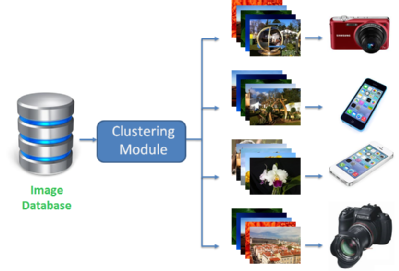Computer Vision Enabled Multimedia Forensics and People Identification: IDENTITY
Funding Body: EU Horizon 2020 - Marie Skłodowska-Curie Actions - Research and Innovation Staff Exchange (RISE)
Project Duration: 1 January 2016 to 31 December 2019
Budget: €2,025,000
| Consortium:
University of Warwick, UK (Coordinator: Professor Chang-Tsun Li) University of Sassari, Italy EURECOM, France PLUS, University of Salzburg, Austria XLAB d.o.o, Slovenia Michigan State University, USA Chinese Academy of Sciences, China University of Campinas (Unicamp), Brazil Hong Kong Baptist University, Hong Kong Nanyang Technological University, Singapore South China University of Technology, China New Jersey Institute of Technology (NJIT), USA Indraprastha Institute of Information Technology (IIIT Delhi), India University of Sydney, Australia
Monash University Malaysia
CENATAV, Cuba
|
 |
Project Summary:
Forensics is a well-established science that aims at applying various disciplines to law enforcement, both civil and criminal, in order to solve questions related to crimes. It is mainly concerned with proving and investigating infringements, identifying perpetrators and describing modus operandi. Biometrics, on the other hand, is a relatively new science that aims at measuring and analysing a person's unique characteristics, both behavioural and physical. It is mainly concerned with the development of technological solutions to extract and evaluate a person's biometric data mainly for verification and identification purposes.
The potential of applying biometrics to forensics comes naturally as several forensic questions rely on identifying, or verifying the identity, of people allegedly involved in crimes. Although these two scientific communities have operated in relative isolation over the past couple of decades, forensic biometrics have been successfully applied through the development of automatic fingerprint identification systems (AFIS), and most recently, through the development of face recognition systems.The potential of forensics biometrics, however, can be extended to other biometric traits, such as iris and gait analysis.
This project aims at consolidating the integration of multimedia forensics into forensic science. Multimedia forensics is concerned with the development of scientific methods to extract, analyse and categorise digital evidence derived from multimedia sources, such as imaging devices. For example, developing technologies to identify, categorise and classify the source of images and video, as well as to authenticate and verify the integrity of their content. Since the enabling technologies in multimedia forensics are similar to those used for identification and verification purposes in biometric forensics, the integration of these areas is seamless.
The project will then support the integration of knowledge and expertise from the forensics, biometrics and multimedia forensics communities. To this end, the proposal will involve not only scientific partners, but also industrial partners and senior police forensic investigators (as advisors), which will be key to facilitate the dissemination of technologies and knowledge in practical scenarios, for example through the development of commercial products and use cases.












